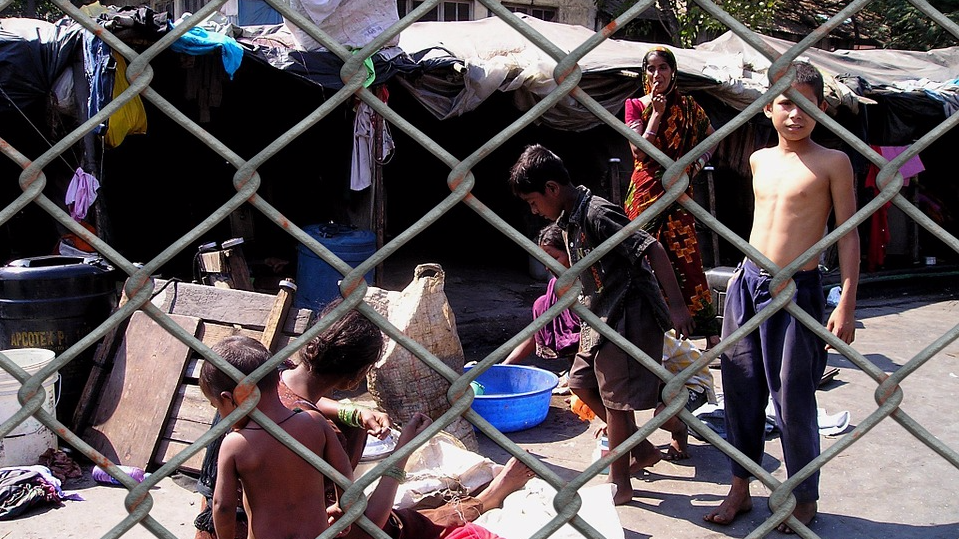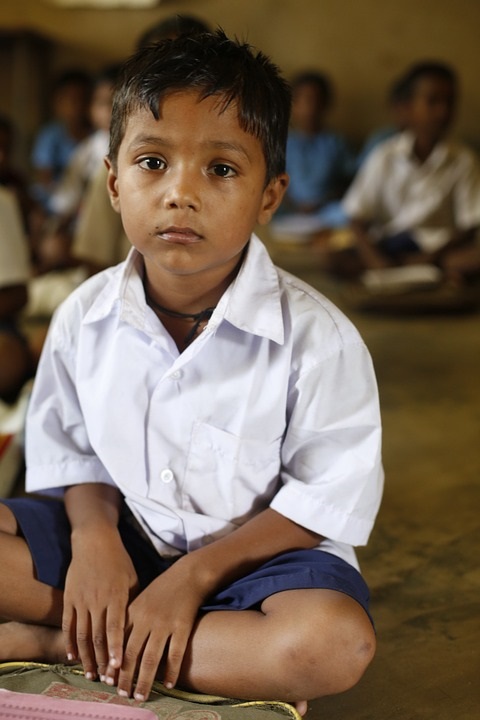
Image for representation purpose only
Despite an extensive mid-day meal programme, a third of children in schools run by Indias richest municipal corporation in the countrys richest city, are malnourished, according to a new report that quotes the corporations own data, obtained through a right-to-information request.
Malnutrition has increased more than four times in Mumbai, from eight per cent in 2013-14 to 34 per cent in 2015-16, according to the report released on May 30, by Praja Foundation, a nonprofit, even as the city leaves a rising proportion of its mid-day meal budget unused.
The malnutrition was revealed during routine health checks conducted in Brihanmumbai Municipal Corporation (BMC) schools.
"We cannot compare Mumbai to Shanghai if many wards in the city have malnutrition rates worse than sub-saharan Africa," said Nitai Mehta, Founder and Managing Trustee of the Praja Foundation.
Malnutrition and diet are now the largest risk factors globally for disease and represent losses up to 10 per cent in GDP, greater than the loss sustained during the 2008-10 global financial crisis, according to the 2016 Global Nutrition Report.
Up to 36 per cent (383,485) of more than one million children in Mumbai are enrolled in government schools, according to the 2015-16 District Information System for Education (DISE) and BMC figures.
Of the children in BMC schools, almost half (189,809) were screened by the school health department and 64,681 were found to be malnourished in 2015-16. Officials estimated that there are 130,680 malnourished children in BMC schools.
Students were malnourished even though 83 per cent and 95.1 per cent of government and aided schools in Mumbai city and its suburbs, respectively, had a mid-day meal programme, according to the DISE.
 Image used for representation purpose only
Image used for representation purpose only
"This raises serious questions on the efficacy of the ICDS (Integrated Child Development Services) and other schemes aimed at improving the nutrition of children," said Milind Mhaske, Project Coordinator, Praja Foundation. "If children are malnourished in their early years of schooling, then it means that the gaps in the schemes need to be identified."
More girls (35 per cent) were malnourished than boys (33 per cent) in 2015-16. The corresponding percentages in 2014-15 were 26 per cent girls and 27 per cent boys and in 2013-14, nine per cent boys and six per cent boys.
The highest proportion of malnourished children in 2015-16 among municipal schools was found in Grade I - 42 per cent for boys and 43 per cent for girls. Most join schools from anganwadis (courtyard shelters or creches), run under the ICDS, which is one of the world's largest child-health programmes.
In 2015-16, 25.5 per cent of children under the age of five years were stunted (less height for age) and 25.8 per cent were wasted (less weight for height) in Mumbai City and 21.3 per cent were stunted and 20.3 per cent wasted in the Mumbai Suburban District, according to the latest health data available from the National Family Health Survey, 2015-16. The BMC malnourishment data reveal that the health of students does not improve as they grow up.
The rise of malnutrition among students at BMC schools is correlated with a rise in diarrhoea cases reported to Mumbai's health system, said the authors of the Praja Foundation study.
Diarrhoea cases increased from 99,838 in 2011-12 to 119,342 in 2015-16, according to a white paper on health published in Praja in 2016.
Also, 29 per cent of diarrhoea deaths in the year 2015 were children younger than 14.
Over a year to 2015-16, malnourished students in Grade I increased from 3,123 to 10,802-a rise of 246 per cent. The number of malnourished children in Grade V increased from 2,591 to 10,562-a rise of 308 per cent.
The poor, eastern suburbs of Mankhurd and Govandi -- areas packed with slums -- reported the highest number (15,038) of malnourished children in 2015-16. Together, these areas comprise what is called the M/E ward, which has Mumbai's lowest human development index (0.05), according to the 2009 Mumbai Human Development Report.
M/E ward is followed by H/E (Santacruz) and L (Kurla), with 9,100 and 6,586 malnourished children, respectively.
Despite the growing malnutrition rates among its children, there does not appear to be a shortage of money to address the problem.
The budget estimates for the mid-day meal programme rose 10.3 per cent from Rs 29 crore to Rs 32 crore for Grade I to V, and 18 per cent from Rs 33 crore to Rs 39 crore for Grades VI to VIII, between 2013-14 to 2015-16.
But the proportion of the budget used for Grades I to V fell from 81 per cent to 65 per cent, and from 83 per cent to 64 per cent for Grades VI to VIII between 2013-14 to 2015-16.
(In arrangement with IndiaSpend.org, a data-driven, non-profit, public interest journalism platform, with whom Swagata Yadavar is principal correspondent. The views expressed are those of IndiaSpend. Feedback at respond@indiaspend.org)
--IANS/IndiaSpend